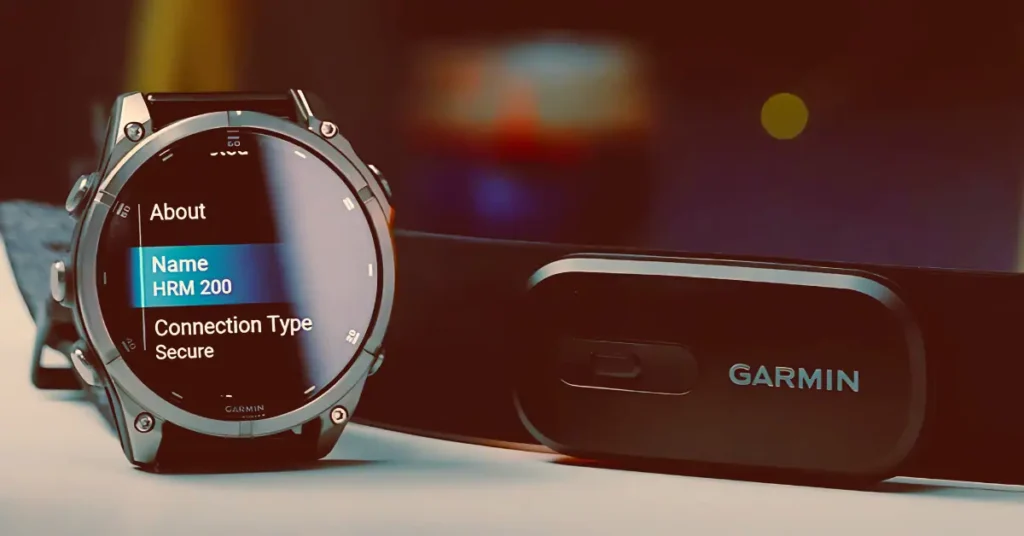The Garmin HRM 200 arrives four years after the firm’s popular HRM Dual. This upgraded chest strap promises more secure Bluetooth connections, an improved user-friendly design, and easier battery access for $10 more than its predecessor.
Be it a weightlifter, cyclist, runner, or anyone frustrated with the accuracy of the wrist monitor during intense activities, the HRM 200 offers accurate heart rate tracking to keep up with the active lifestyle one life.
If you are serious about performance and accuracy, this might just be the upgrade you have been waiting for.
How Does the HRM 200 Compare to the HRM Dual?
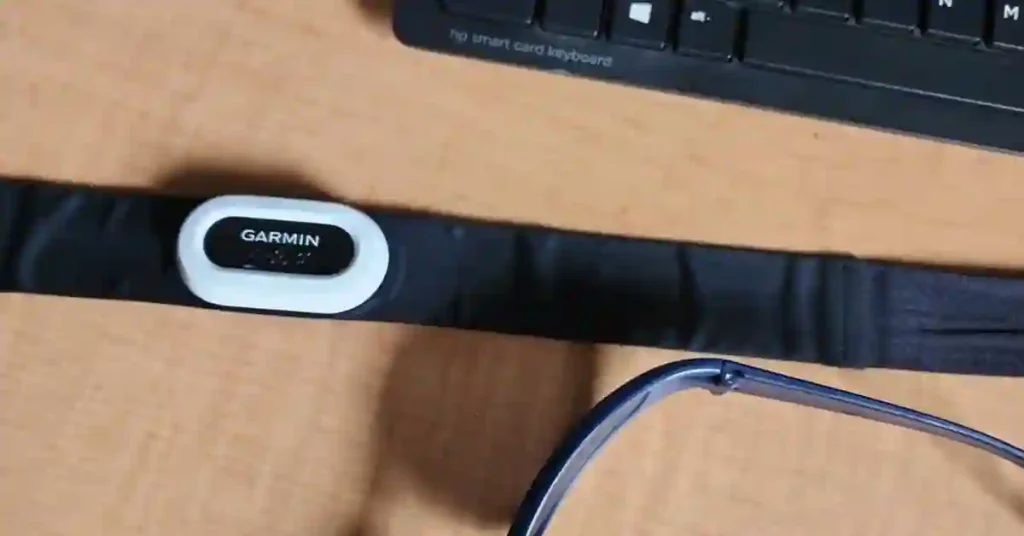
The HRM 200 is an enhancement of the HRM Dual but introduces minor yet important enhancements. Like its predecessor, it features a modular design with a separate pod and strap, making maintenance easy.
But Garmin also included some welcome extras this time out: a visible pairing button with an indicator light, improved water resistance for hardcore workouts, and an easier way to swap out the battery.
And, of course, it has secure Bluetooth connectivity to keep your data private – an upgrade required for new EU health data privacy regulations, no less.
For $80, that’s just $10 more than the HRM Dual, which feels like a no-brainer of an upgrade.
Who Should Consider the HRM 200?
If you’re someone who relies on heart rate data for training, this strap offers a huge advantage. While modern smartwatches have improved accuracy, they can struggle during certain activities.
Weight training often confuses wrist-based sensors due to constant wrist movement. Similarly, factors like skin tone, tattoos, or arm hair can affect their reliability.
External chest straps, like the HRM 200, bypass these issues by sitting directly on your chest and using ECG technology for precise readings.
Athletes, fitness enthusiasts, and anyone looking for accurate tracking will appreciate its consistency.
Why Chest Straps Beat Wrist-Based Monitors
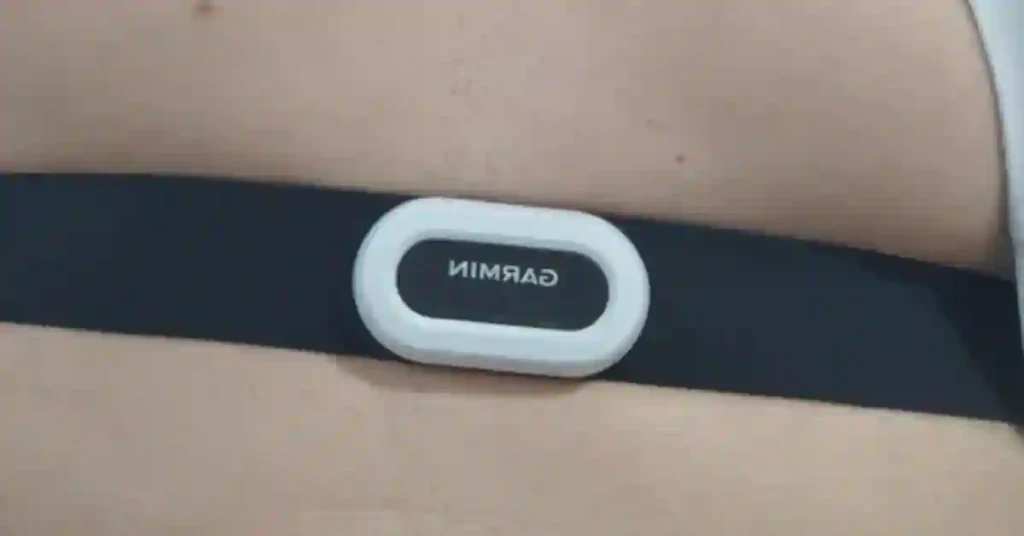
Wrist-worn optical sensors are convenient, but they aren’t perfect. They can lag during rapid heart rate changes (like high-intensity intervals) and might struggle during workouts involving a lot of wrist movement.
They’re also not immune to inaccuracies caused by tattoos, darker skin tones, or even arm hair.
Chest straps eliminate these problems. They sit closer to your heart and rely on ECG tech, which doesn’t face the same limitations.
Chest straps are the way to go if you care about getting the best possible data, especially during demanding workouts.
Is the HRM-200 the Best Choice? A Comparison with Garmin’s Top Heart Rate Monitors
Garmin HRM 200 vs. HRM Dual vs. HRM-Pro Plus Spec
| Key Feature | HRM-200 | HRM-Dual | HRM-Pro Plus |
|---|---|---|---|
| Price Tag | Affordable at $79 | Budget-friendly at $69 | Premium at $129 |
| Transmission Tech | Dual ANT+ & Bluetooth Smart | Dual ANT+ & Bluetooth Smart | Dual ANT+ & Bluetooth Smart |
| Security Features | Optional Encryption & Authentication | None | None |
| Bluetooth Connections | Supports 3 devices at once | Single connection | Supports 5 devices |
| User-Friendly Design | LED Indicator & Mode Switch Button | Lacks LED & Mode Switch | No LED/Mode Switch |
| Battery Life | 1-year CR2032 | Impressive 3.5 years CR2032 | 1-year CR2032 |
| Battery Compartment | Child-safe, no tools needed | Screws required | Child-safe, no tools needed |
| Water Resistance | 3ATM (30 meters) | 1ATM (10 meters) | Superior 5ATM (50 meters) |
| Weight | 63g | 54g | 52g |
| Slimness | 11mm thickness | 11mm thickness | Slimmer at 8.6mm |
| Running Dynamics | Lacks this feature | Lacks this feature | Equipped with Running Dynamics |
| Offline Storage | No | No | Yes, for swimming & multi-sport activities |
| Indoor Pace/Distance | Not available | Not available | Yes, tracks pace & distance indoors |
| Size Options | XS-S, M-XL | M-XL | M-XL |
| Best For | Basic fitness tracking & future-proof | Entry-level users (retired) | Advanced metrics, swimmers & multisport |
Garmin HRM 200 Review- What’s New in?
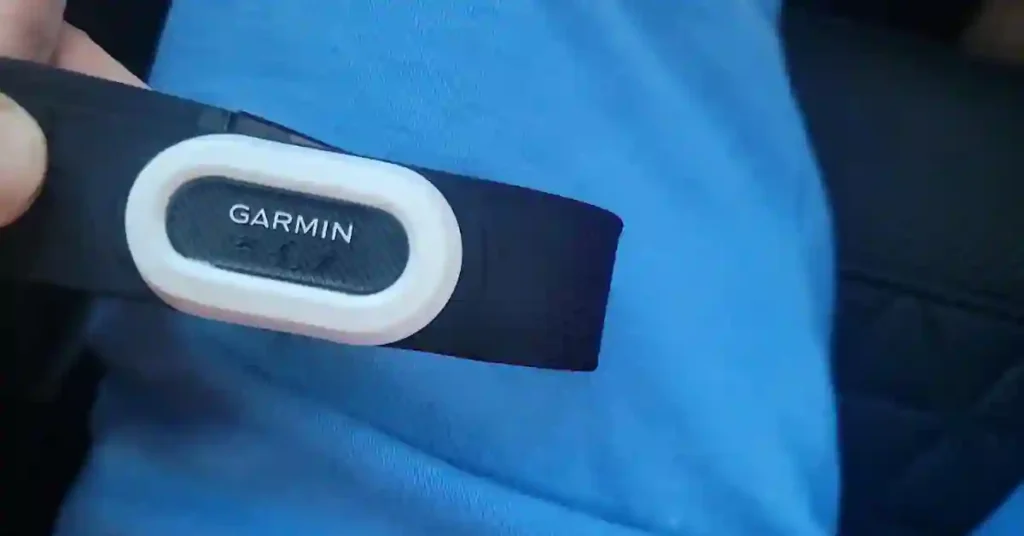
Improved Design and Features
- The HRM 200 keeps the modular design, making the strap washable and the pod detachable for maintenance.
- A new pairing button and status LED make setup quicker and easier to understand.
- The strap comes in two sizes for different chest diameters, ensuring a comfortable fit for many users.
- While it has a 3 ATM water resistance rating (perfect for heavy sweating), it doesn’t support swimming due to the lack of onboard memory necessary for underwater signal storage.
Connectivity Perks
One big highlight is its connectivity. The HRM 200 offers three Bluetooth connections alongside unlimited ANT+ pairing.
This lets you connect to multiple devices at once—whether it’s a smartwatch, bike computer, iPad, or even Apple TV.
For example, you could track your heart rate on your Peloton while syncing with your bike computer and a fitness app simultaneously.
Garmin also introduced a secure Bluetooth connection mode. This encrypts and authenticates your data for better privacy, a response to new EU regulations.
While this isn’t a must for everyone, it’s a nice option for those who prioritize data security.
Easy Battery Replacement
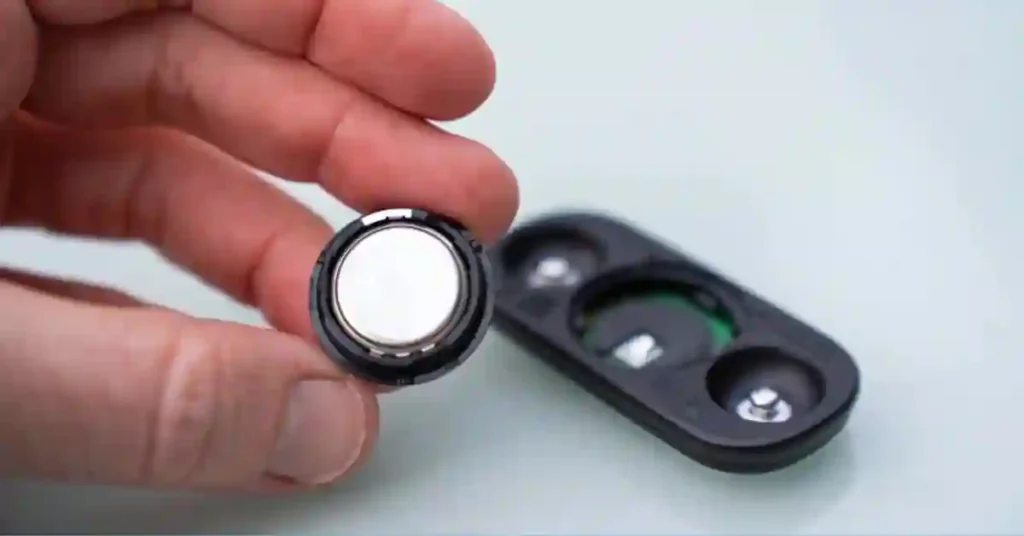
Gone are the days of needing a screwdriver. The HRM 200 features a redesigned compartment on the back, accessible using a built-in tool on the strap itself.
It uses a standard CR2032 battery with a lifespan of up to a year (assuming about an hour of daily use).
If you enable the always-on LED mode—which keeps the light active during use—expect the battery to last closer to 257 days.
The LED also serves as a handy status indicator. Green means the battery is good, orange signals it’s low, and red means it’s time for a replacement.
How’s the Accuracy?
I put the HRM 200 to the test alongside other popular devices like the Polar H10, Apple Watch Ultra, and Polar Verity Sense.
Across the board, the HRM 200 delivered results that were either identical or very close to the Polar H10—a gold standard for chest straps.
Let’s break it down by workout type:
Indoor Cycling
During an indoor cycling session, the HRM 200 showed no issues. It matched the Polar H10 almost perfectly. In contrast, the Apple Watch Ultra revealed slight latency when responding to quick heart rate changes.
While you’d likely never notice this delay during steady-state workouts, it confirms why chest straps remain superior for precise data during dynamic activities.
High-Intensity Interval Training
The HRM 200’s responsiveness shined here. Rapid heart rate spikes and drops were tracked instantaneously.
Wrist sensors, like those on the Apple Watch Ultra, struggled slightly, as expected. If HIIT is a core part of your routine, this strap is an excellent choice.
Ski Erg Machine
For my Ski Erg sessions—an activity that combines arm movement and gripping handles—wrist-based sensors faltered again. The HRM 200, however, stayed reliable throughout.
It’s a great example of how chest straps outperform wrist monitors during complex, full-body movements.
Weight Training
This is where wrist-based monitors really fall short. Exercises like bicep curls or bench presses involve constant wrist movement, which confuses optical sensors.
The HRM 200 showed near-identical tracking to the Polar H10 during my strength sessions. While there was a minor blip here and there on either strap, the data remained consistent overall.
Added HRV Tracking
The HRM 200 also supports heart rate variability (HRV) monitoring through apps like Elite HRV. This can help track your recovery, stress levels, and overall health.
If HRV is an important part of your wellness routine, the HRM 200 is compatible with the tools you need.
Practical Design Features
Comfort and Fit
The strap uses a soft, smooth material that’s gentle on the skin. Its hook-and-loop closure makes it easy to adjust and ensures it stays in place throughout your workout.
Inside the strap, the extra grip prevents slipping during sweaty sessions.
Care and Maintenance
Detaching the pod lets you toss the strap into the washing machine for a quick clean (air-drying is recommended). More practically, though, you can just rinse it in the sink after workouts.
The pod itself automatically powers down after detecting inactivity, saving battery life.
HRM-200 vs. HRM-Dual: What’s the Difference?
While the HRM-200 is a direct replacement for the HRM-Dual, there are some key differences between the two models:
Modern Features: The HRM-200 offers encryption and authentication options, increasing the security level of data transmission. The HRM-Dual does not offer these features.
Improved User Experience: The mode-switching button and inbuilt tool for easy battery replacement are featured in the HRM-200, which is not the case with the HRM-Dual.
More Bluetooth connections: While the HRM-200 can support three simultaneous Bluetooth connections, the HRM-Dual allows for only two. That makes the HRM-200 more versatile for people who will need to be connected to different devices.
Battery Life: The HRM-200 has a very short battery life when judged against the approximate 3.5-year lifespan of the HRM-Dual. In any case, this is less of an issue since the replacement of the battery in the HRM-200 is tool-free.
Water Resistance: The HRM-200 is water-resistant to 3ATM (30 meters), whereas the HRM-Dual is rated for 1ATM (10 meters). Therefore, the HRM-200 might have a slight edge in tracking heart rate during light swimming or outdoor activities.
HRM-200 vs. HRM-Pro Plus: Worth It?
The HRM-Pro Plus adds some advanced metrics and features which will make it a better option for athletes or advanced users, in general. Here’s a quick comparison between the two:
Advanced Metrics: The HRM-Pro Plus also includes running dynamics, offline storage for activities such as swimming, and indoor pace/distance tracking, none of which are available on the HRM-200. If you want in-depth data about your workouts, then the HRM-Pro Plus is the way to go.
Water Resistance: The HRM-Pro Plus has 5ATM-rated water resistance, good for swimming and multi-sport activities, whereas the rating for HRM-200 is 3ATM.
Lighter and Thinner: The most outstanding aspect of the HRM-Pro Plus is that it weighs lighter and is even thinner compared to the HRM-200, making it more comfortable during serious physical activities.
Battery Life: The HRM-200 and HRM-Pro Plus are both designed with a one-year battery life; however, the Pro Plus redeems itself with more advanced features and sturdiness.
Is It Worth the Upgrade?
If you’re still using the HRM Dual and it’s working fine, there’s no real need to upgrade to the HRM 200.
That said, the new pairing button, secure Bluetooth connection, and easier battery replacement might be reason enough to switch once your Dual wears out.
For first-time buyers, the HRM 200 is a no-brainer: for $10 more than the old HRM Dual, you’re getting an easier tool to use, more secure, and just as reliable.
Bottom Line: Should You Get the Garmin HRM 200?
The Garmin HRM 200 delivers everything present in the ideal chest strap and even more. Since it boasts rock-solid accuracy, high ease of functions, and modernized connectivity in one, it is a must in the arsenal of anyone looking seriously at detailed workout tracking, be it running, cycling, indoor training, swimming, or TRI.
Whether you’re wearing it for cycling, weightlifting, or even an interval-based class, it’s built to perform.
If you have any particular questions about Garmin HRM 200, go ahead and drop them down in the comment section below! Don’t forget to subscribe to the Newsletter and enable push notifications in order not to miss any cool fitness tech reviews and deals in the future!
Upgrade your fitness journey today! Grab the Garmin HRM 200 on Amazon now and experience unmatched heart rate tracking
Thanks for reading, and stay tuned for more insightful reviews and updates. ????
| Heart Rate Monitor | Key Features | Exclusive Deal |
|---|---|---|
| Garmin HRM-200 | Dual ANT+ & Bluetooth Smart, 3 Bluetooth connections, Child-safe battery compartment, 1-year battery life | Grab It Now |
| Garmin HRM-Dual | Budget-friendly, ANT+ & Bluetooth Smart, Long-lasting 3.5 years battery, Reliable for basic fitness | Shop It Here |
| Garmin HRM-Pro Plus | Running dynamics, Offline storage, 5ATM water resistance, Ideal for multisport athletes | Get the Deal |
Also Read :- New Garmin Index Sleep Monitor: Comfort + Sleep Data You Can Trust
Garmin hrm-dual vs Garmin hrm-pro specs
Can you connect a heart rate monitor to Garmin Connect?
Yes, you can connect a heart rate monitor (HRM) to Garmin Connect. Garmin Connect supports a wide range of heart rate monitors, including those from Garmin (such as the HRM-Dual and HRM-Pro) and other compatible devices that use Bluetooth or ANT+ technology.
Here’s how to connect a heart rate monitor to Garmin Connect:
Enable Bluetooth or ANT+ on your device: Make sure your Garmin device (e.g., smartwatch or bike computer) has Bluetooth or ANT+ enabled.
Pair the heart rate monitor with your device:For Bluetooth HRMs: Open the Garmin Connect app on your smartphone, go to the “Devices” section, and select “Add Device.” Follow the prompts to connect your Bluetooth heart rate monitor.
For ANT+ HRMs: Ensure that the heart rate monitor is within range of the Garmin device. In the device settings, choose “Sensors & Accessories” and select “Add New Sensor” to find your ANT+ heart rate monitor.
Start an activity: Once the HRM is connected, it will start transmitting your heart rate data to your Garmin device, which syncs it to Garmin Connect for tracking and analysis.
You can view your heart rate data, analyze trends, and track performance over time on Garmin Connect, helping you stay on top of your fitness progress.


